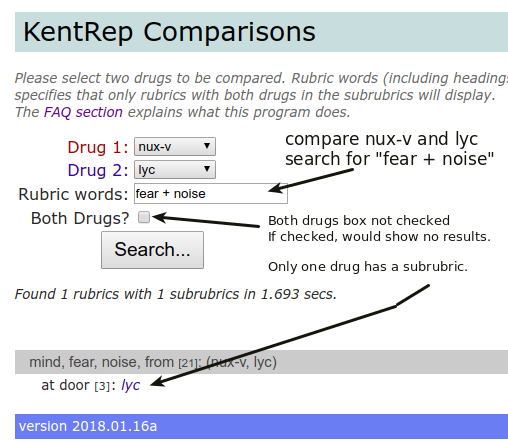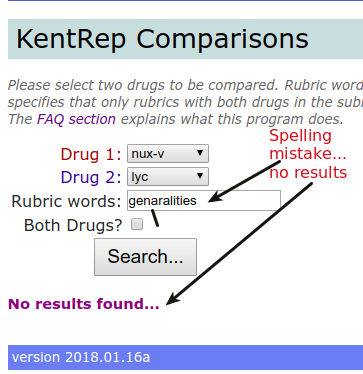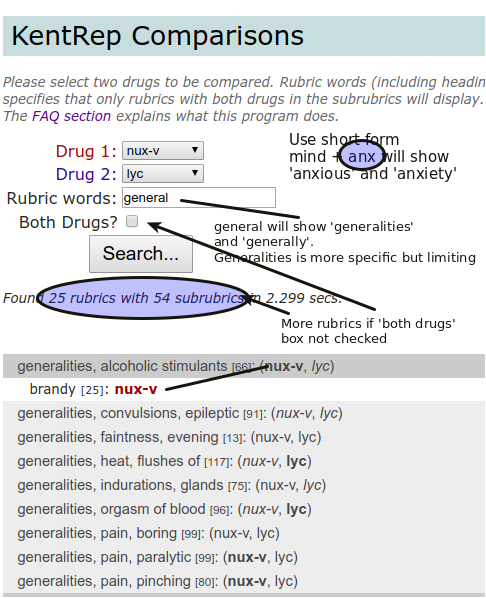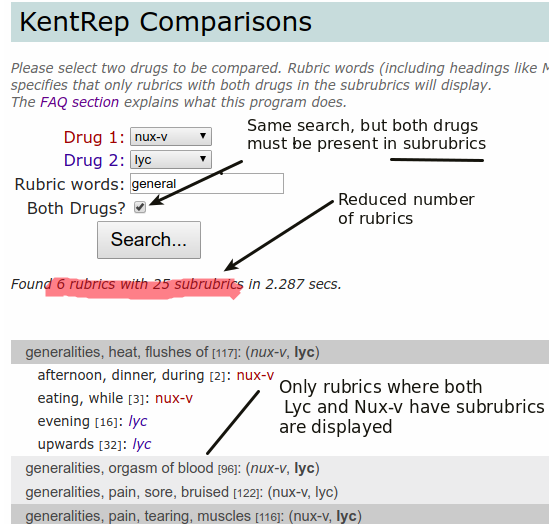How To Use KentRep Comparisons
KentRep Comparisons is based on Kent's Repertory (3rd Edition) modified to indicate keynotes. The purpose of this program is to differentiate between two drugs that seem very similar in a case - for example, arnica / baptisia and baptisia / pyrogen in fever. Both may have a dull sensorium, with tendency to drop off to sleep while answering - but the subrubrics may differ. Anacardium and Bryonia have aversion to company, but in Bryonia, it is mainly company of strangers that he is averse to.
Given two drugs to compare, the program finds rubrics common to both drugs, and then shows the specific differences in the sub-rubrics. It optionally allows you to enter a rubric word(s) such as 'fear' or "fear + dogs". Thus, you can compare belladonna and glonoine in their head symptoms.
A combination of one or more rubric words, separated by a "+" can be used. The rubric words box can be left blank, in which case the sub-rubrics of all rubrics common to both drugs will be displayed. Section words like "Mind", "Cough", "Extremities" can be used as well. The search is not case sensitive. The number of drugs in the rubric are also displayed, so that you can see if it is a large rubric or a much more specific, small rubric. Only the drugs being compared are displayed, to avoid confusion and distraction.

If you find no results, check the spelling!

The "both drugs" box, if checked, will only show rubrics where both the drugs have subrubrics. Sometimes, it is useful to even have just subrubrics of one drug, to be able to ask the patient. e.g, both drugs may have cough only in daytime, but only one drug has a subrubric -- better by lying down. This can be asked and confirmed / verified.

The same search as above, with "Both drugs" box checked, shows only 6 rubrics, as compared to 25 rubrics above.
